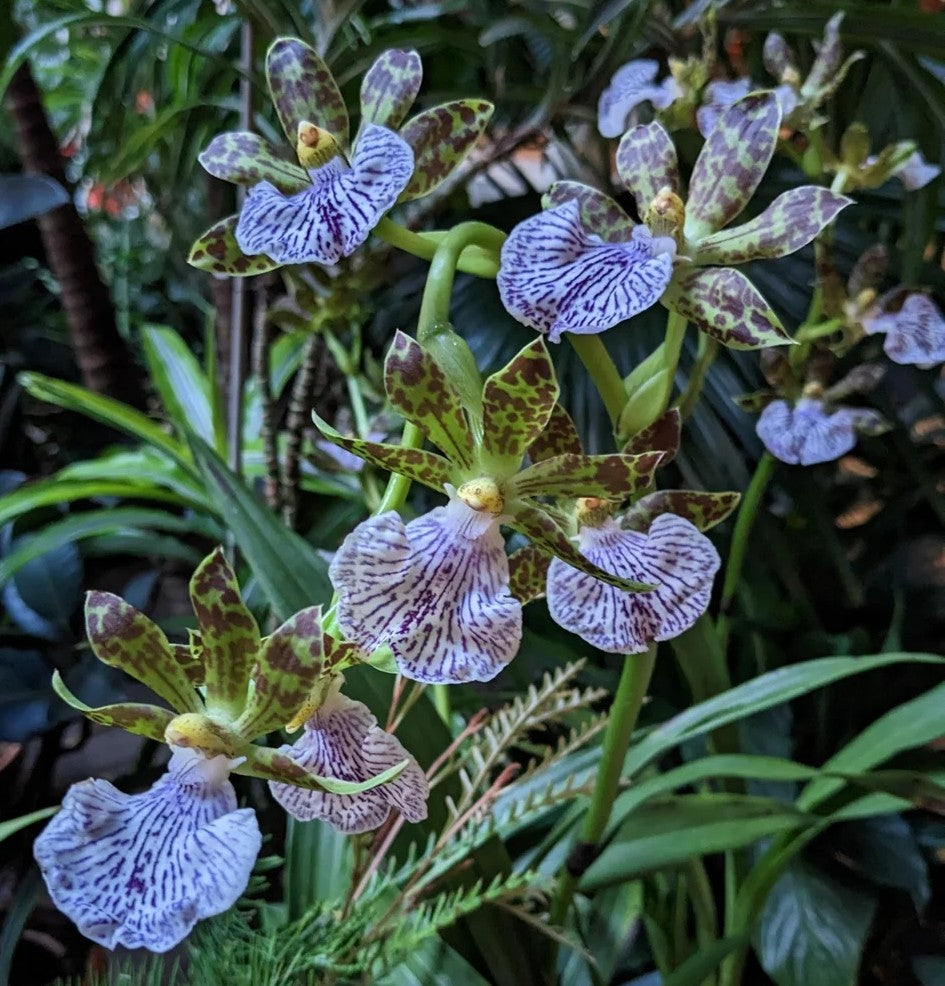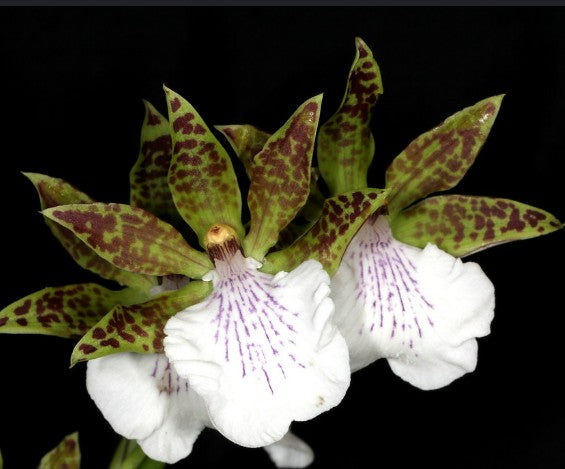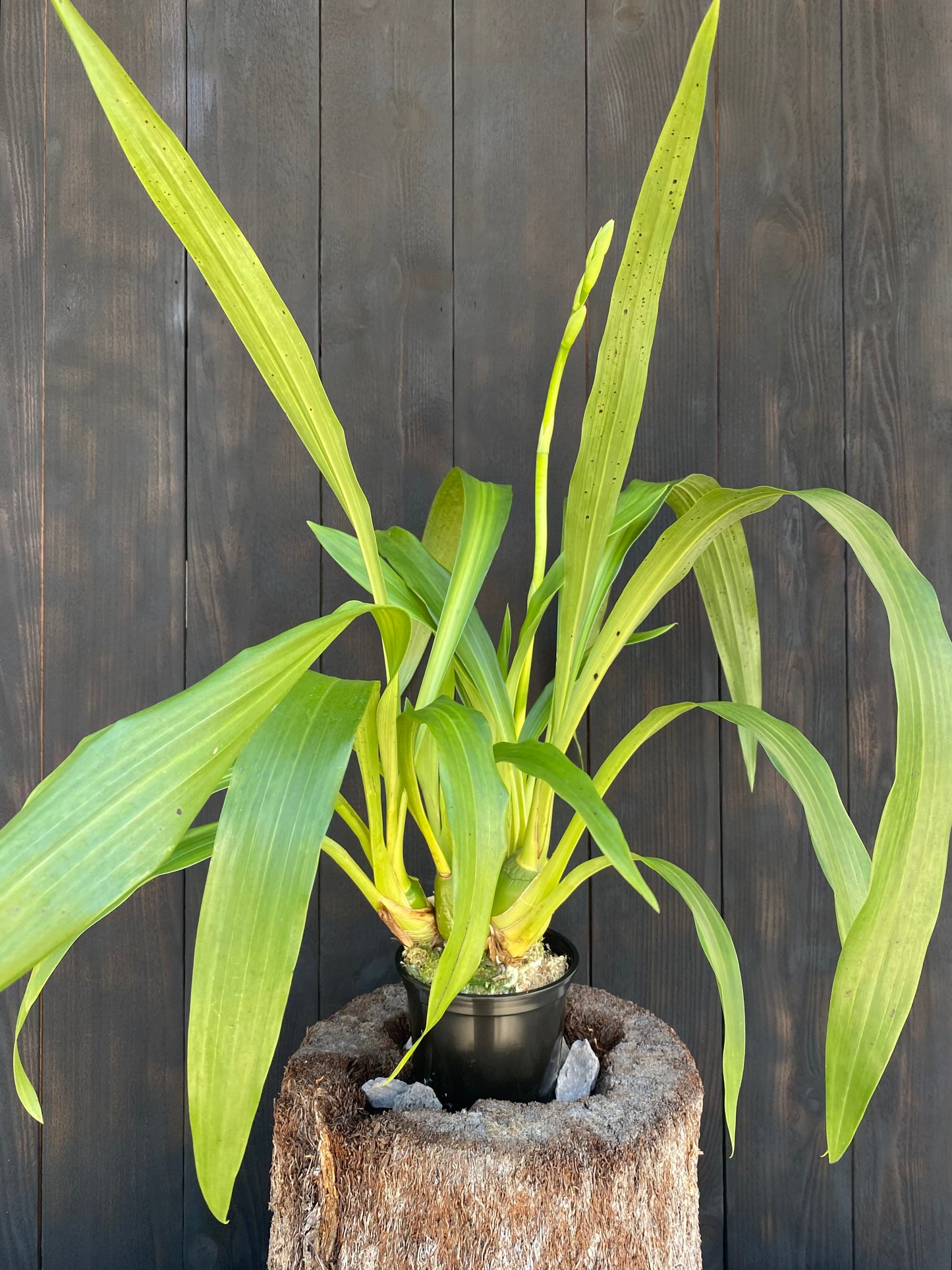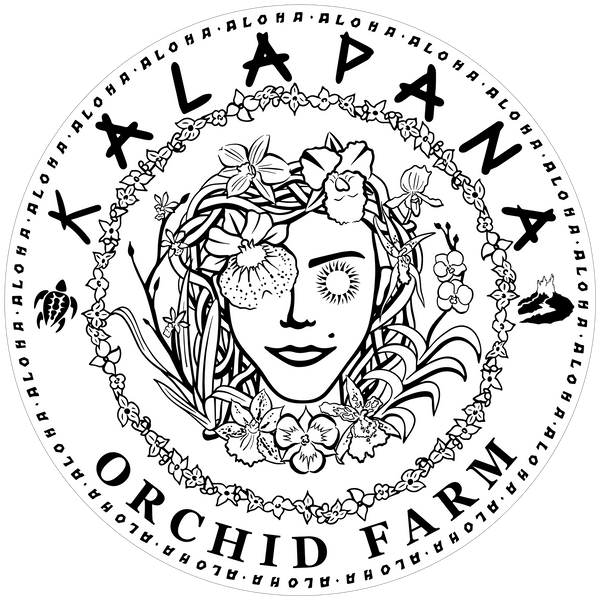Kalapana Orchid Farm
Zygopetalum maculatum (syn. mackayi)
Zygopetalum maculatum (syn. mackayi)
Couldn't load pickup availability
Offered in 6" pots, in spike!
Let's start with a bit of botanical housekeeping. You'll see this orchid labeled Zygopetalum mackayi a lot, and for a hundred years, that was the name almost everyone used in horticulture. These days, the botanists have separated them, and the plant most commonly found in cultivation is correctly identified as Zygopetalum maculatum. While there are subtle differences, the names are often used interchangeably.
This is a species orchid, so to understand it, we have to go to its home. Zygopetalum maculatum is native to the cool, moist, high-elevation mountain forests of Peru, Bolivia, and Brazil. It grows at elevations from 3,600 all the way up to 7,200 ft, often as a terrestrial in damp, grassy clearings and among leaf litter at the base of cliffs. This habitat tells us everything about what it wants: consistent moisture, cool nights, and good air movement.
The flowers are the reason for its fame. First, the fragrance. It is absolutely incredible—a powerful, spicy, hyacinth-like perfume that will fill a room, especially in the morning. It’s one of the benchmark scents in the orchid world. The flower itself is a masterpiece of color and pattern. The sepals and petals are a yellowish-green, heavily blotched and barred with a rich chocolate-mahogany. These form a perfect, star-shaped frame for the magnificent lip. The lip is broad and fan-shaped, mostly brilliant white, and intricately painted with a radiating network of fine violet-purple veins. The waxy, 3-inch flowers are held on a tall, upright spike that can reach nearly 2 ft. and carry five to ten of these fragrant beauties.
The plant is a robust grower, with the signature clustered, egg-shaped pseudobulbs and long, glossy, pleated leaves. A common quirk in this genus is a tendency for the leaves to develop small, harmless black spots, often a reaction to minerals in water or humidity fluctuations. It’s just part of their character. As we enjoy this beautiful early September weather, we're right at the beginning of their prime blooming season, which typically runs from fall into winter.
Care Instructions
Light: Provide bright, but indirect or filtered light. An east-facing window is ideal. The leaves will burn in direct, hot sunlight.
Water: Keep the potting medium consistently moist; do not allow the plant to dry out completely. Using high-quality water, such as rainwater, distilled, or reverse osmosis water, is highly recommended to prevent spotting and leaf-tip burn, to which this species is prone.
Temperature: This is a cool to intermediate grower. It thrives with daytime temperatures of 65-75°F but absolutely requires a nighttime drop to 50-60°F to initiate blooming and maintain long-term health. It will suffer in prolonged heat.
Humidity: High humidity is essential, ideally 60-80%. This should be coupled with good air circulation to prevent fungal issues. Low humidity can cause new leaves to become trapped in a "pleated" state.
Potting Medium: A moisture-retentive but well-draining mix is required. A mix of fine-to-medium fir bark, perlite, and sphagnum moss is an excellent choice. They do not like their roots disturbed, so repot only when necessary, typically every two years.
Share






